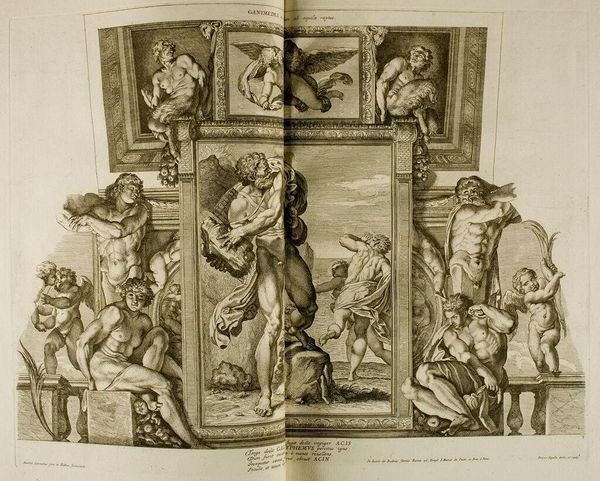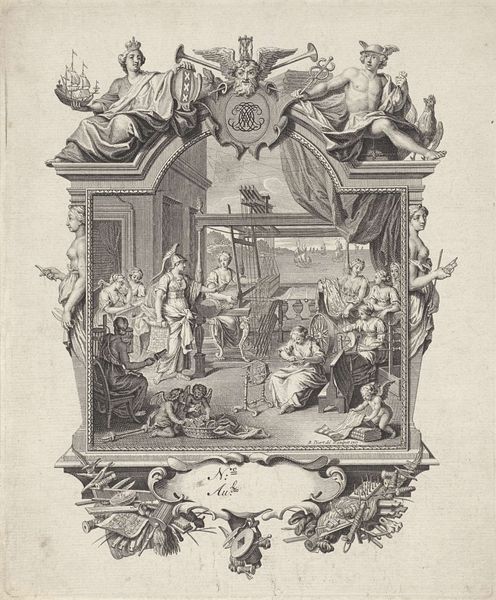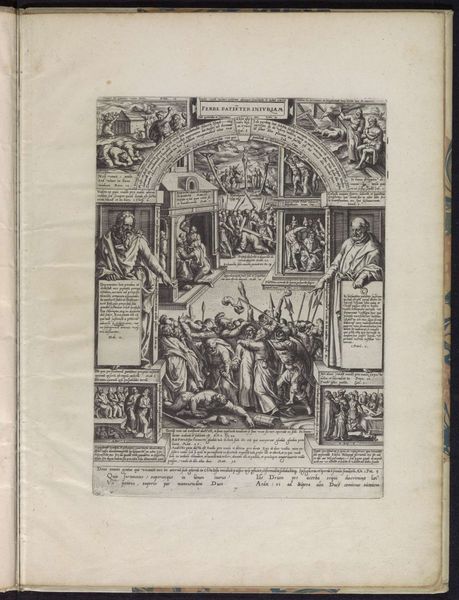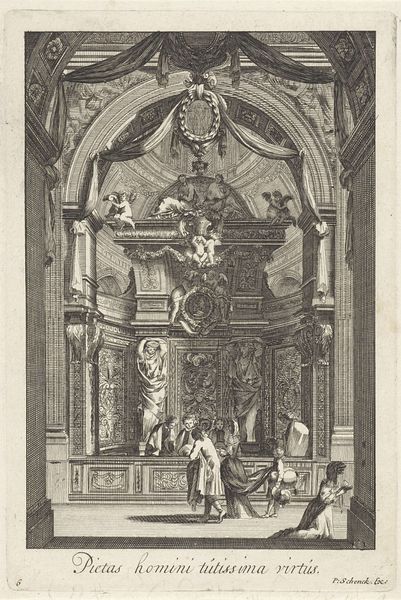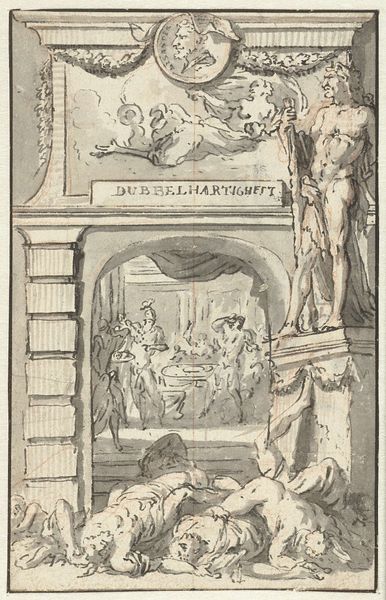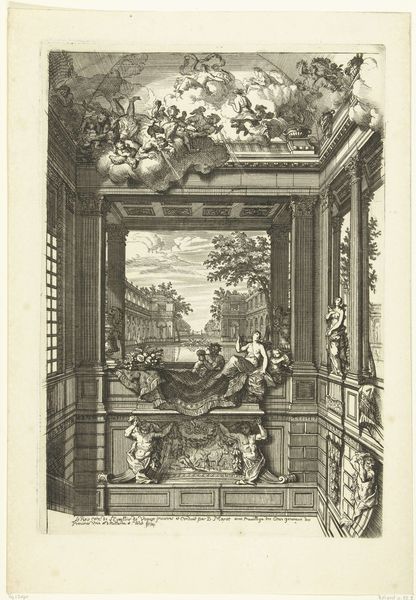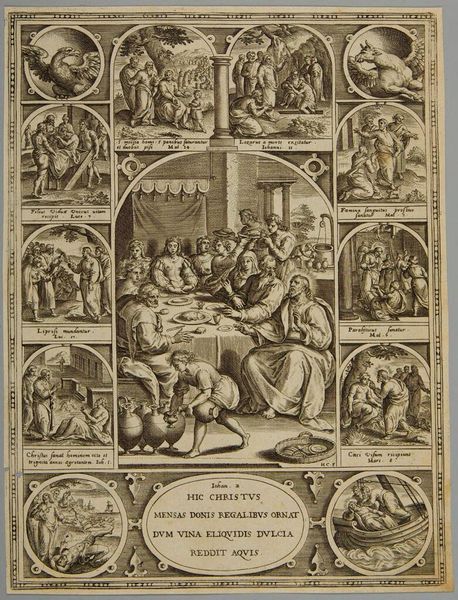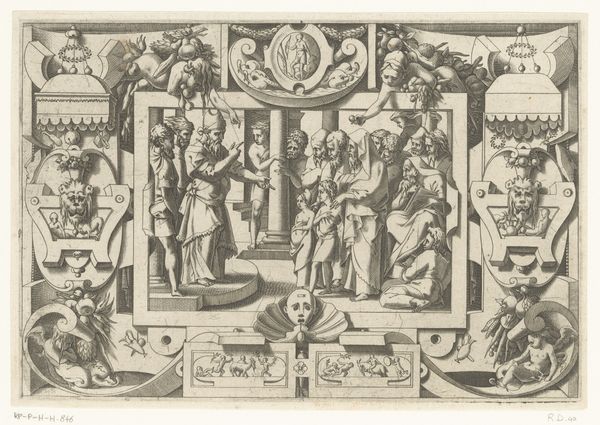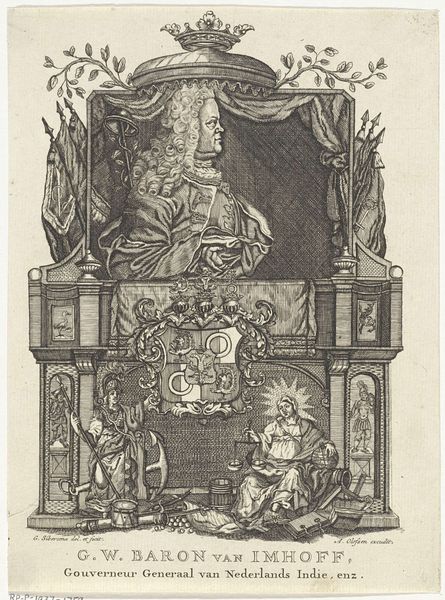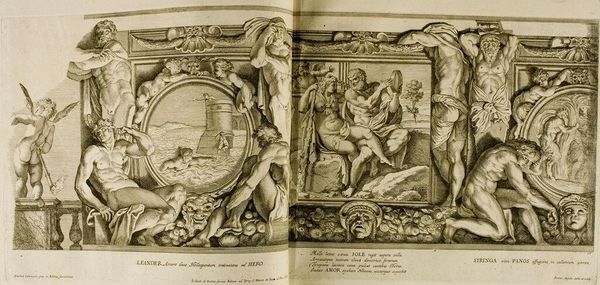
Copyright: CC0 1.0
Curator: This engraving, Galeriae Farnesianae: Polyphemus and Galatea, was created by Pietro Aquila, who lived from 1650 to 1700. Editor: It's a striking composition! The musculature feels so pronounced, almost aggressively rendered. Curator: The artist really emphasizes the classical forms, wouldn't you agree? The arrangement of figures echoes a theatrical stage design. Editor: Absolutely, and consider the historical context. It's a depiction of power dynamics, with Polyphemus's thwarted desire mirroring broader themes of domination and resistance. Curator: I see it more as an exploration of surface and depth, where the interplay of light and shadow creates an almost palpable sense of volume. Editor: It’s impossible to ignore the narrative Aquila is presenting! It leaves me contemplating the ongoing relevance of these power imbalances. Curator: It invites us to appreciate the formal sophistication of late Baroque engraving. Editor: And to consider its lasting impact on our understanding of social and political structures.
Comments
No comments
Be the first to comment and join the conversation on the ultimate creative platform.
